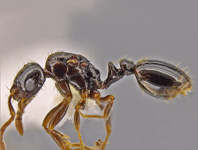Abstract
Megalomyrmex Forel is a distinctive lineage of Neotropical ants, some of which are specialized parasites or predators of the fungus-growing ants Attini. Here we review and key the Central American fauna. Six new species are described from both female castes: M. brandaoi sp. n., M. fungiraptor sp. n., M. longinoi sp. n., M. milenae sp. n., M. megadrifti sp. n. and M. osadrifti sp. n. A worker-based key to all Central American species is presented, and all species are illustrated. Megalomyrmex drifti Kempf is redescribed and the first descriptions of queens for M. miri Brandão and M. foreli Emery are provided. New biological information, several new geographic records, and a discussion of the species-group schema of Brandão (1990) are presented. The male sex of Megalomyrmex is diagnosed at the genus-level and keyed to species for the Central American fauna, where known. The male of each species treated in the key is diagnosed, described, or redescribed. Males are known for fourteen out of twenty total Central American Megalomyrmex species. A distinct but unassociated male is described and keyed (M. male 01). The males of M. miri Brandão and M. wettereri Brandão are described for the first time, and the distinctness of these two species is confirmed. One potential synapomorphy of Megalomyrmex present in males and workers is the presence of a carina which posteriorly delimits the basalmost region of the petiolar dorsum.

